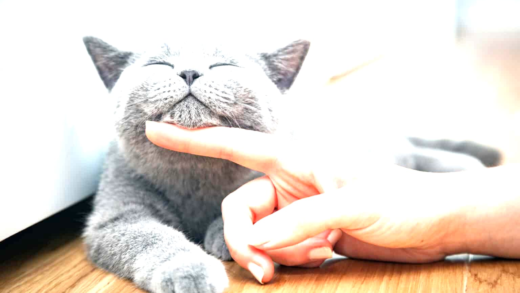Sword swallowing is a complex performance art that involves not only physical skill but also psychological resilience. It requires extensive training to master the technique safely, with significant risks involved. Common misconceptions about sword swallowing can lead to misunderstandings about the art form. The consequences of failed attempts can be severe, highlighting the need for proper training and awareness of safety measures.
What is Sword Swallowing?
Sword swallowing is an extraordinary performance art that involves the insertion of a sword into the throat and esophagus. This skillful act, often seen in circus performances or sideshows, requires precision, control, and an understanding of the human body. Unlike what many might think, sword swallowers do not simply plunge a sword down their throat; they engage in a complex interplay of body mechanics and mental focus.
The art of sword swallowing has a long history, dating back to ancient cultures where it was used as a form of entertainment and even as a ritualistic act. The performers, known as sword swallowers, often captivate audiences with their daring feats, showcasing not only their physical abilities but also their psychological resilience. This unique performance art challenges the limits of human capability, leaving spectators in awe.
How Sword Swallowing Works
Understanding how sword swallowing works involves delving into the intricate mechanics of the human body. The act requires the sword swallower to relax their throat muscles and align their esophagus with the sword’s path. This alignment is crucial; if misaligned, the sword can cause serious injury.
The technique involves several key steps:
- Preparation: Sword swallowers often start by practicing with smaller, less intimidating objects before progressing to actual swords.
- Visualization: Many performers visualize the path the sword will take, calming their mind and body to facilitate the act.
- Physical Control: A significant aspect is controlling the gag reflex and coordinating breathing with the insertion of the sword.
Understanding the physical mechanics is essential. The sword must be inserted smoothly, without sudden movements, to avoid injury. This requires not just physical skill but also a deep awareness of one’s body and its responses.
Dangers of Sword Swallowing
While sword swallowing may seem like a thrilling spectacle, it is fraught with dangers. The risks associated with this performance art are significant and can lead to severe injuries. Common hazards include:
- Esophageal Injury: Incorrect technique can cause cuts, tears, or even perforation of the esophagus.
- Infection: Any injury to the throat or esophagus can lead to infections, which may require medical intervention.
- Choking: If the sword is not inserted properly, there is a risk of choking, which can be life-threatening.
To mitigate these risks, many performers undergo rigorous training and adhere to strict safety measures. Awareness of the potential dangers is crucial for anyone considering this art form.
Training for Sword Swallowing
Training for sword swallowing is a meticulous process that demands dedication, patience, and a willingness to push physical limits. This art form requires aspiring performers to engage in a comprehensive training regimen to master the necessary techniques safely. The training typically unfolds in several stages:
- Introduction to Techniques: Beginners often start by practicing with non-threatening objects like dowels or flexible rods to build confidence and familiarity with the motions.
- Gradual Progression: Once comfortable, trainees gradually move to heavier and more rigid swords, ensuring that their technique remains sound.
- Breathing Control: Learning to control breathing is essential. Performers practice coordinating their breath with the sword’s insertion to avoid panic and maintain calm.
- Gag Reflex Training: This involves exercises to help desensitize the gag reflex, allowing for smoother sword insertion without triggering discomfort.
- Regular Practice: Consistency is key. Daily practice helps reinforce muscle memory and ensures the sword swallower can perform accurately and safely.
Throughout this training, performers must remain aware of their body’s responses. Understanding personal limits and recognizing any signs of distress is crucial. With rigorous practice, sword swallowers can refine their skills and prepare for live performances.
Safety Measures for Sword Swallowers
Safety measures in sword swallowing are paramount, given the inherent risks of this daring act. Performers implement various precautions to minimize the likelihood of injury during performances:
- Pre-Performance Checks: Sword swallowers inspect their swords for any imperfections or sharp edges that could cause harm.
- Warm-Up Exercises: Just like athletes, sword swallowers engage in warm-up exercises to prepare their bodies for the performance, focusing on throat and neck muscles.
- Spotters: Many performers work with spotters or assistants who can help monitor the act and assist in case of an emergency.
- Emergency Protocols: Establishing clear emergency procedures is critical. Performers should know how to respond quickly if something goes wrong.
- Health Assessments: Regular health check-ups ensure that sword swallowers are physically fit and capable of performing this demanding art.
By adhering to these safety measures, sword swallowers can perform their art with greater confidence and reduce the risk of accidents.
Historical Examples of Sword Swallowing
Sword swallowing has a rich and varied history that spans centuries and cultures. Its origins can be traced back to ancient civilizations, where it served as both entertainment and a demonstration of bravery. Notable historical examples include:
- Ancient India: Sword swallowing is believed to have roots in ancient Indian performance arts, where it was used in religious rituals and ceremonies.
- Medieval Europe: During the Middle Ages, sword swallowers became popular in traveling circuses and fairs, captivating audiences with their daring feats.
- 20th Century Sideshows: The rise of sideshows in the 1900s saw sword swallowers gain fame, often featured alongside other unique performers in carnivals.
- Modern Performers: Today, sword swallowers continue to amaze audiences worldwide, combining traditional techniques with modern flair and artistry.
This historical context not only highlights the evolution of sword swallowing but also reflects the enduring fascination with this remarkable skill. As performers continue to innovate, the legacy of sword swallowing remains vibrant and compelling.
Psychological Factors in Sword Swallowing
Sword swallowing is not just a physical feat; it also has significant psychological dimensions. The motivations behind why individuals choose to perform this act can be varied. Many sword swallowers are drawn to the thrill and excitement that comes with pushing the limits of their bodies. This desire for adrenaline can be a compelling factor, similar to extreme sports enthusiasts.
Moreover, some performers find a deep sense of accomplishment in mastering such a challenging skill. The act of sword swallowing can serve as a form of self-expression, showcasing one’s bravery and uniqueness in a world where conformity often reigns. Additionally, the psychological resilience developed through training can help performers cope with anxiety and fear, transforming them into confident individuals both on and off the stage.
Interestingly, the psychological aspect can also involve a community connection. Many sword swallowers join groups or collectives where they share experiences and support each other in their craft. This camaraderie can enhance their motivation and commitment to the art, creating a positive feedback loop that encourages continued practice and performance.
Body Reaction to Sword Swallowing
The body’s reaction to sword swallowing is fascinating and complex. When a performer prepares to swallow a sword, several physiological responses are triggered. The most notable is the relaxation of the throat and esophagus muscles. This process requires not only mental focus but also significant physical control.
As the sword is inserted, the body instinctively reacts to the foreign object. The gag reflex is a primary concern; thus, sword swallowers train extensively to desensitize this reflex. They learn to manage their breathing, coordinating it with the sword’s insertion to avoid panic. This control is crucial for a smooth performance and helps minimize the body’s adverse reactions.
Another important factor is the adrenaline rush that performers experience. This hormone can heighten awareness and focus, allowing for better control during the act. However, it can also lead to increased heart rate and other physiological changes that the performer must learn to manage. Understanding these bodily reactions is essential for any aspiring sword swallower, as it helps them anticipate and cope with the challenges of their art.
Misconceptions about Sword Swallowing
There are numerous misconceptions surrounding sword swallowing, many of which can deter potential performers or mislead audiences. A common myth is that sword swallowers simply force the sword down their throats. In reality, the act requires a precise alignment of the esophagus and a controlled insertion technique to avoid injury.
Another misconception is that all sword swallowers are born with the ability to perform this act. In truth, it requires extensive training, practice, and dedication to master the necessary skills safely. Many believe that sword swallowing is purely a physical challenge, ignoring the psychological preparation that plays a crucial role in a performer’s success.
Additionally, some people think sword swallowers are immune to injuries. However, the risks are significant, and many performers experience minor injuries during their training. Understanding these misconceptions is vital for anyone interested in the art of sword swallowing, as it promotes a more informed perspective on the skill and its challenges.
Consequences of Failed Sword Swallowing
While the art of sword swallowing can be mesmerizing, it comes with serious consequences if not performed correctly. The most alarming outcome of a failed attempt is injury to the throat or esophagus. Such injuries can range from minor cuts and bruises to severe perforations that require immediate medical attention.
In some cases, performers may choke if the sword is not aligned correctly, leading to potentially life-threatening situations. The psychological impact of a failed attempt can also be significant, potentially causing anxiety and fear that may deter individuals from performing again.
Additionally, failed attempts can lead to infections if any damage occurs, necessitating medical intervention. Overall, understanding these consequences is crucial for anyone considering sword swallowing, as it underscores the importance of proper training and safety measures.





Comments are closed.